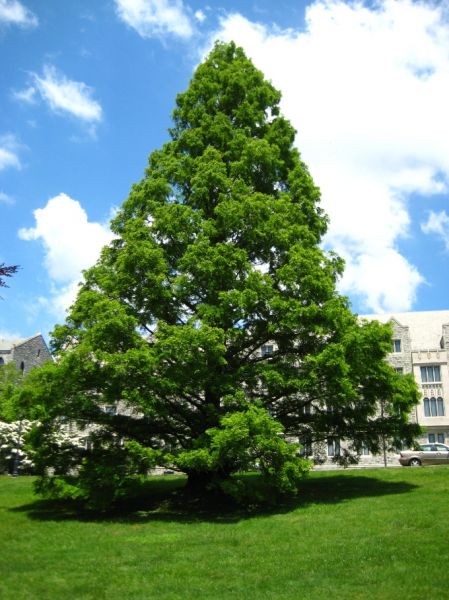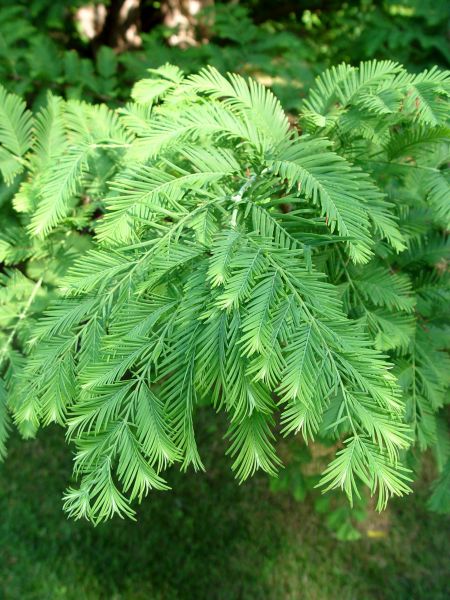Dawn redwood, Metasequoia glyptostroboides
Shipping calculated at checkout
99 in stock
Need more? Contact us
A living fossil like Gikgo Biloba.
Metasequoia glyptostroboides is a species of large trees in the family Taxodiaceae, or Cupressaceae depending on the classification. It is native to China where it was discovered in 1943. It is the only living species of the genus Metasequoia whose origin dates back to the Pliocene and as such is considered a panchronic form.
The Chinese metasequoia is a large tree, growing very quickly, which can reach 50 to 60 meters high with a straight trunk two meters in diameter, and with a conical, or columnar shape in certain conditions. Its foliage is made up of opposite, linear, flexible leaves, approximately 2 to 4 cm long. It is a deciduous tree, a fairly rare characteristic among certain conifers such as larches and bald cypress. These bright green leaves turn a beautiful copper-red color in the fall before falling. The globose cones measure 2 to 3 cm in diameter and have 16 to 30 scales arranged in opposite pairs in four rows, each pair being at right angles to the adjacent pair. Growth rate: under good conditions, a Metasequoya can grow approximately 1 meter per year.
Many botanical gardens cultivate this species which was thought to have been extinct for around 100 million years. Its seeds germinate easily and the plants show rapid development. In autumn, its needles take on a light brown color and end up falling with the small branches that support them. It is a hardy species in a temperate climate which adapts easily to cultivation in gardens. It is now widely planted in parks around the world. For climate zone 5 and above.



